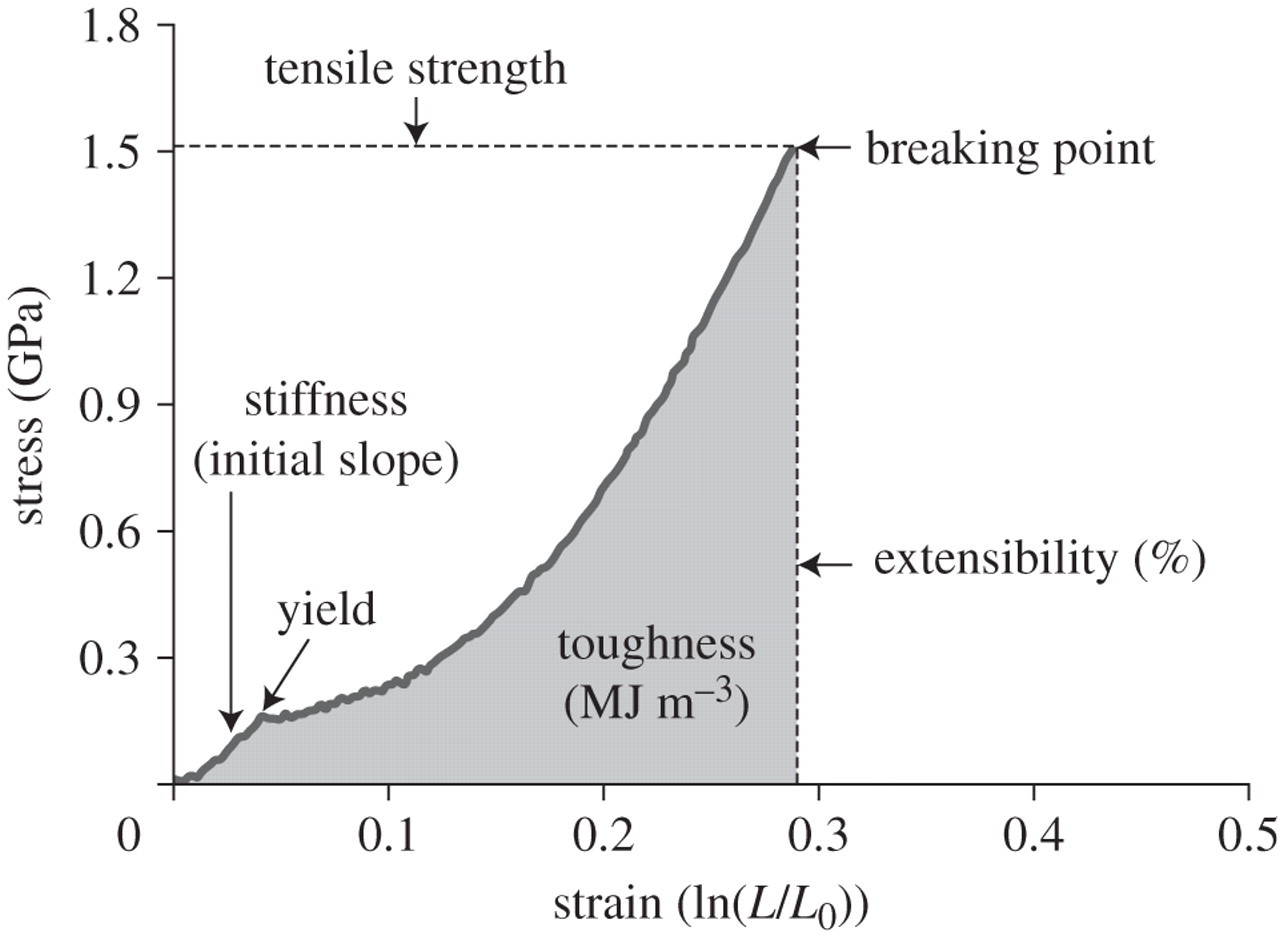Methods
Summary
Webs from Tetragnatha will be collected in four islands of the Hawaiian archipelago. Capture spiral threads and major ampullate (dragline) threads will be collected directly from each web. Dragline will also be reeled directly from the spiders’ spinnerets under control conditions for both lineages of Tetragnatha (orb weavers and cursorial non-orb weavers). Silk mechanical properties will be study using a Nano Bionix test system (Agilent Technologies, Oak Ridge, TN, USA, Figure 1) to compare dragline and capture spirals across orb-weavers, as well as dragline properties between orb-weavers and cursorial non-orb weavers. Since silk performance is determined in part by chemical composition, amino acid composition will be determined using High Performance Liquid Chromatography. Solution-State NMR will measure salt composition of glue droplets in capture spirals, which helps determine glue stickiness.

Figure 1. Force-Extension curve obtained from mechanical testing of materials. The Nano Bionix test system will allow us to obtain measurements of tensile strength, extensibility and toughness of spider silk.
Challenges
Weather is not something we can control once we are out in the field. Hawaiian Tetragnatha build webs during very humid conditions, and at night. Rain is very common in this type of environment necessary for humid conditions but not for finding orb-webs. Sufficient time at each island (2 weeks) will give a good time-frame to get good perfect weather nights.
Protocols
This project has not yet shared any protocols.